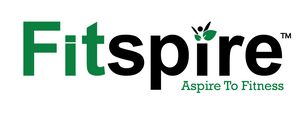Most of the health articles discuss creatine as a great source to gain lean muscle mass and recover energy after an intense workout. While that is true, most individuals are unaware of the numerous other advantages creatine offers for all body types.
Most of us simply know that whey protein helps build muscles. While that supplement is also important, creatine is recommended to improve performance during the intervals between workouts.
So, do you require Creatine and whey protein, or only one of them? What time of day is ideal for getting the most out of the supplements? What is the appropriate creatine dosage and age limit?
In this post, we'll address all of these queries and more, as well as some surprising facts that most people won’t tell you concerning creatine supplements.
What is Creatine?
Let’s first understand what creatine is and how it works to benefit the overall human structure.
Creatine is a substance that is naturally present in the body and in certain foods. It absorbs water in the cells, keeping the body hydrated without bloating. It is an indirect source of energy, with 95% stored in the muscles and the rest 5% for brain functioning.
This is the reason creatine is linked to providing the necessary fuel to the body for daily activities, but especially during intense workouts.
Let’s delve into 5 things that people won’t tell you about Creatine supplements.
5 Unknown Facts About Creatine
We all know that Creatine is helpful for muscle energy and for restoring stamina, among other things. However, consumers frequently struggle to decide between creatine, whey protein, and isolate. There are certain well-known facts concerning creatine, but there are also some that you should be aware of.
-
Creatine Helps More When You Have Lower Levels
The greatest supplement for restoring and supplying energy to muscles is creatine. It is supported by a wealth of modern and historical studies. The unexpected finding is that those with lower creatine levels appear to benefit more than those with greater levels. It is used to treat depression and multiple sclerosis (MS) in addition to helping people gain muscle. Additionally, there is sufficient data to back up the usage of creatine by people looking to recover from severe illnesses. -
Creatine is Found in Most Sports Supplements
Do you know that most of the Sports Supplements in the US contain creatine? Over 50% of professional athletes and bodybuilders use creatine to improve their daily performance. No wonder even teenagers in school have started adding creatine to their diet. Creatine is also allowed by the International Olympic Committee and the National Collegiate Athletic Association (NCAA). -
Creatine Benefits for Children and Elderly
People frequently believe that children and the elderly should use supplements with caution since they have an age limit. Indeed, increased protein intake also contributes to metabolic issues. Daily consumption of Creatine raises its chemical levels in the brain, particularly in those who are GAMT or AGAT deficient. A hereditary condition affecting the brain and muscles is called GAMT. Additionally, AGAT is a developmental disability that first manifests in infancy. -
Creatine Boosts Muscle Strength in Older Adults
Muscles and bones get their power from protein. Taking creatine for up to 12 weeks has been demonstrated to increase muscle strength in older persons, but users should be aware of the amount. However, consistent exercise is also required in addition to Creatine Supplementation. The dosage for appropriate ingestion is prominently displayed on the packaging of high-quality goods, such as Fitspire's creatine. Additionally, doctors advise that lesser doses of up to 4-5 grams per day for up to 18 months and up to 25 grams per day for up to 14 days can be used safely. It's best to see your coach or gym trainer before taking it regularly, as it may cause cramping in your muscles, an upset stomach, and dehydration. -
Creatine is Found in Various Foods
Selective foods and drinks may have creatine in small or large quantities. For non-vegetarians, creatine is found in poultry, red meat, fish, pork, eggs, and some dairy products. Vegan options for creatine are almonds, quinoa, tofu, pumpkin and sesame seeds, spinach, chickpeas, etc.
Conclusion
Muscle growth and energy restoration are not the only advantages of creatine. It affects both the brain and the entire body. Numerous studies have demonstrated its beneficial effects in treating specific neurological diseases.
Creatine Monohydrate is a powerful supplement, and therefore it is highly recommended to consume it in limited quantities or only when suggested by an expert for athletic events or bodybuilding. The knowledge of common and surprising facts mentioned here will help you make informed decisions and build a healthy routine to improve overall fitness.


